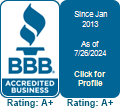Excessive wear and abrasion in a pneumatic conveying system can seriously impact your profitability. Not only do you need to buy replacement parts more often, but the system downtime required for repairs means a great deal of lost revenue.
Pneumatic conveying elbows and bends are at a particularly high risk of wear. That’s because they endure both impact and abrasion damage from conveyed products. But there are a few simple steps you can take to improve abrasion resistance, wear resistance, material integrity, and more with ease.
6 effective ways to reduce pneumatic conveying elbow wear
1) Adjust the velocity of your conveying system
The faster your materials move through your system, the harder they strike your pneumatic conveying elbows, leading to greater wear. This is doubly true if those elbows appear at the end of a long stretch of straight pipe that lets your materials pick up speed.
There are two ways to counter the effect of high velocity and reduce wear:
- Use shorter conveying lines: This isn’t usually an option for existing systems. But it should be a major consideration when planning a new conveying line.
- Decrease air power: Even small changes in velocity can have a big impact on wear. By setting air power to just above the minimum value required for successful conveying, you can minimize the amount of elbow wear you experience. In most cases, minimum conveying velocity is set at least 20% higher than saltation velocity.
2) Change the elbow radius
There’s a great deal of debate over whether long-radius elbows or short-radius elbows are better for pneumatic conveying.
In long-radius elbows, materials tend to drag along the back of the elbow rather than impact a single point. This spreads the wear over a greater area, extending the life of the elbow. You can reduce wear even further by using reinforced elbows with high abrasion resistance, like mortar-filled flat-back elbows or our patented Ceram-Back® elbows.
However, when transporting materials that smear, create streamers, or have small particle size, the increased drag of long-radius elbows can actually increase material degradation. In these cases, short-radius elbows tend to be more suitable as they help maintain high product quality.
Whether you use long- or short-radius elbows should depend on your application. But in general, long-radius elbows are better than short-radius elbows for reducing wear.
3) Use tougher elbows
Not all elbows are designed to handle abrasive wear. Using the wrong type of elbow can greatly increase system wear, as well as affect system pressure drop and product degradation.
Take aluminum elbows, for example. Their naturally occurring oxide film makes them an excellent choice for corrosive applications. But their lower durability means they wear quickly when transporting abrasive products.
In addition to switching to a material with greater wear resistance, moving to a thicker gauge tubing or schedule of pipe can also help you reduce wear. Just note that installing a thicker elbow can sometimes cause a ledge due to different inner pipe diameters. In these cases, you can turn down and smooth out the ledges to match your other lines.
Be aware that simply changing elbow material or wall thickness won’t be enough to solve severe abrasion problems. But they can be easy ways to make a big difference in certain applications.
4) Use elbows with wear-resistant linings
Certain elbows are designed specifically for wear-resistant applications. These include elbows with ceramic linings, cement linings, composite linings, abrasion-resistant alloys, replaceable backs, and more. While these can be slightly more expensive than plain elbows, their vastly superior abrasion and wear resistance make them the most cost-effective solution.
Many of the wear-resistant elbows manufactured by Progressive Products Inc. fit perfectly into your conveying system without changing your conveying lines. Take a look at our product range to find a variety of specialty elbows that help you reduce wear and cut costs.
5) Use specialized fittings
As well as specialty elbows, you can also reduce wear with abrasion-resistant fittings. These elbows are usually very short and work through mechanical means. Specialized fittings include vortex elbows, dead-end tees, Ni-hard fittings, and our ultra-resistant Ceram-Back® fittings.
6) Find the weak spot in your system
Occasionally, elbows wear out because of weak points in the design of a pneumatic conveying system.
If your elbows are put in your system with threaded ends, for example, that’s a weak point. These elbows only remain in your system as long as the thinly walled grooves hold out. It’s also not unusual to see elbows wear underneath compression couplings.
Switching to elbows with flanged ends, abrasion-resistant spools, or greater tangent length can eliminate these kinds of weaknesses.
Solve excessive elbow wear with industry-leading components
In some cases, it’s possible to reduce elbow wear by recalibrating your pneumatic conveying system. But most of the time, you need to change the size, types, or features of your elbows to tackle the problem effectively. That means partnering with an experienced and trusted components supplier that consistently meets your needs.
As veterans in pneumatic conveying component design, we’ve spent over 40 years manufacturing industry-leading elbows that protect against wear. Our elbows are built with durability, abrasion resistance, and cost-effectiveness in mind, and we have options for a wide variety of industries. And if we don’t carry the specific parts you need, we can custom manufacture original elbows to meet your specifications.
Browse our selection of wear-resistant elbow now and get in touch for a free no-nonsense quote.

